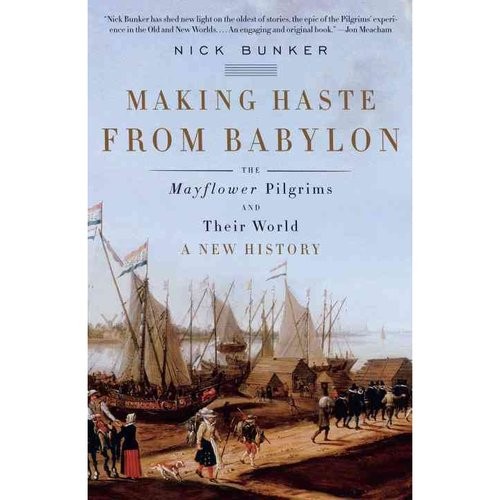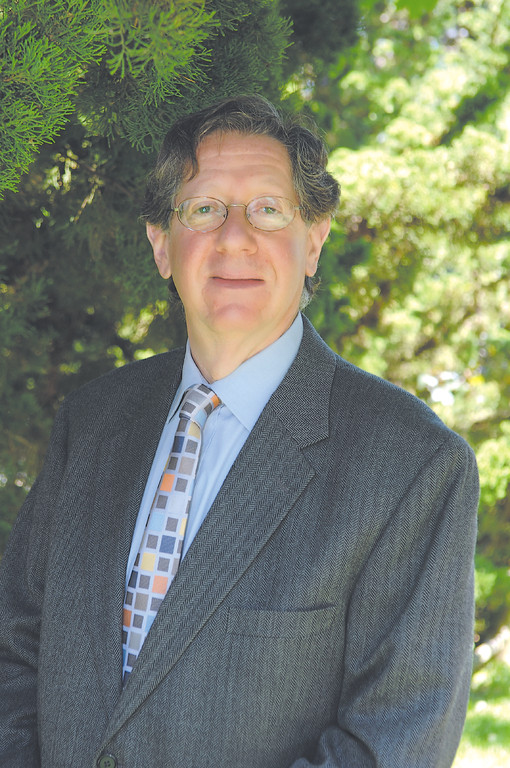On big holiday’s eve, more Thanksgiving Judaica
The essays by Rabbi Moshe Sokolow and Rabbi Meir Soloveitchik cited in last week’s essay prompted great interest, especially in the Bible commentary by Henry Ainsworth referenced by them. This prompted me to research this matter further and to bring to your attention a work written and published three years ago by British historian, Nick Bunker, entitled, “Making Haste From Babylon: The Mayflower Pilgrims and Their World” [Vintage Books, 2010].
Within this volume the author goes into greater detail as to the role and influence that Ainsworth’s commentary on the Psalms played in the religious beliefs of William Bradford, the leader of the Pilgrims. Within this book’s third chapter, “Crossing Sinai,” is described in great detail the crucial role that theology and scripture played in the beliefs of the pilgrims and their leadership.
For your information, please find below a series of quotes and references that will serve to best inform you of the great role our Jewish religious faith played in the behavior of these founding Puritan settlers of our nation.
Consider this from Bunker’s work:
“Hebrew possessed a special appeal for Puritans. They wished to swim back up the stream of learning, to absorb the wisdom of the Bible from as close to the source as possible, free from what they saw as Roman Catholic duplicity or errors in translation. … They read with sympathy the rabbis of the Roman Empire, Egypt, and medieval Spain, authors whose books were preserved by the Jews of Germany or Venice.”
Bunker details the various Jewish religious influences that influenced Ainsworth’s work and theology, a theology that held Bradford in thrall.
Consider, further, the following:
“Inspired by the work of the rabbis, Ainsworth made new translations of the Psalms and the Torah. He wrapped around them a commentary, verse by verse and word by word, trying to distill every drop of meaning conveyed by their authors. He pointed out that when Jewish scholars turned the Bible into Greek, a single Hebrew term often required several Greek words in its place.”
“He drew upon many rabbis, but Ainsworth named one thinker as by far the most exquisite of all. This was the Jewish philosopher Maimonides, who lived in the 12th century.”
Remember this fact as you continue on. It was Ainsworth who had the greatest influence upon Bradford; it was his commentary that he always carried with him in his pack, and his theology in his mind and voice.
Further on we read the following interesting take:
“Inside the head of William Bradford, the Pilgrims mimed out these episodes of sacred history. When they reached dry land, they repeated another ancient formula. At Provincetown, they fell on their knees and thanked G-d, says Bradford. Again, behind his narrative lies a Hebrew model. It came by way of Bradford’s knowledge of a Jewish ritual, the birkat ha-gomel, a ceremony of thanksgiving.”
This prayer stemmed from Psalm 107, a psalm that had great meaning to the pilgrims. According to Bunker, “If Bradford turned to the notes Ainsworth added to Psalm 107, he would find Ainsworth quoting Maimonides. Writing about the Mishnah, the rabbi said that the words of the Psalm, including the verses quoted by Bradford, gave birth to the Jewish rite of thanksgiving. The Talmud listed four occasions when birkat ha-gomel was compulsory: the healing of a sickness, the release of a prisoner, the end of a voyage, and the arrival of travelers at their destination. Ainsworth listed them, too, and described the form taken by the Jewish prayer. It was a public confession of the goodness and majesty of G-d, of exactly the kind that the Pilgrims performed at Provincetown.”
All this is but an introductory to one of the most inspiring chapters in the new world’s history. Bunker’s work warrants your attention and study. It will certainly enhance your appreciation for the Thanksgiving tradition that reflects upon the greatness of America.
As we proudly consider the Jewish connections to the American civic holiday of Thanksgiving that we celebrate this week, together with the festival of Chanukah, please give serious consideration to the teachings that we learned from Rabbi Soloveitchik, Rabbi Sokolow and Dr. Bunker. Unfortunately, the pop history that passes for serious scholarship by many of the uninformed among us, has yet to come to terms with what is reality in the world of knowledge. Hopefully, what has been reflected in the essays of these past two weeks will accomplish just that.
FOR FURTHER STUDY
The new edition of the Hakirah Journal of Jewish Law and Thought features a timely essay and study entitled, “The Movement of the Chanukah Menorah Indoors: An Historical and Halachic Analysis,” by Rabbi Moshe Walter of Silver Spring. This 13 page study goes into many of the little known facts in the placement of the menorah and of the many historical details and observances as they were changed through the ages due to changes in circumstances beyond our communal control. Also, consider his new book, “The Making of a Halachic Decision” that will, iy”H, be the subject of a review in the near future. A heads up on this book by me: It is a must read, without any reservation.

 53.0°,
Mostly Cloudy
53.0°,
Mostly Cloudy 







